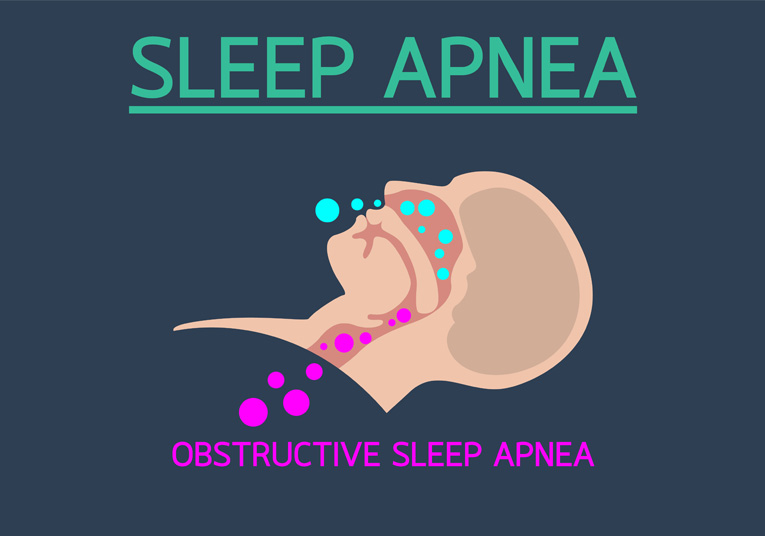OBSTRUCTIVE SLEEP APNEA (OSA)
Date of publication: środa, 15 marzec 2023

The most common form of sleep apnea is OSA.
The word obstructive is key here: something has happened to the upper airway during sleep to obstruct the process of inhaling and/or exhaling. This an issue of mechanics and it can be caused by a number of things:
- Relaxed tissues and muscles in the upper airway.The lining of your upper airway is flexible and pliable. During the day, while you are upright, it remains firm or patent, allowing good clearance for breathing. At night, however, these same tissues and muscles naturally relax; tissues and muscles can collapse, either partially, or completely, as you sleep, leading to episodes of OSA.
- Medications:Tissue relaxation, leading to partial or complete collapse in the upper airway, can come from the use of certain medications, bedtime alcoholic "nightcaps," smoking, or the use of other recreational substances.
- Age:Even something as simple as aging can make us more susceptible to obstructive apnea; we lose tissue and muscle tone, the older we get.
- Sleeping position.If you sleep supine (or on your back), you are more likely to experience the partial or complete obstruction of your upper airway than you are if you sleep on either your left or right side.
- The presence of fatty tissue in the throat area.The added weight of "fat pads" in and around the neck can contribute to any measurable collapse of upper airway tissue as you sleep. People who are overweight or obese generally carry more fatty tissue around their necks than do thin people.
- General problems with fluid retention.Most people only notice swelling (also called edema) in their lower extremities, which is basically gravity pulling the retained fluid toward their feet. However, when they recline to sleep, that fluid redistributes itself across the fat layers in the body (fat deposits are where most retained fluid hides). Any fat around the neck region will collect additional fluids; like the fat pads themselves, this can add weight to the area, forcing potential collapse of tissues there during sleep.
- Congenital issues with the structure of the jaw, the throat, or the nasal passages.Sometimes we are born with distinctive shapes to our cranial structure: a "soft" jaw, narrow cartilage in the nasal areas, broad cheeks, short necks. Some of this ‘architecture’ can influence breathing ability during sleep and contribute to obstructions.
An episode of OSA typically consists of a partial or complete pause in airflow for at least ten seconds while you are asleep. During this time, your body continues to try to breathe; the diaphragm at the base of the lungs is still moving up and down per instructions from the brain in a process called respiratory effort. But the blockage in the upper airway won't permit the flow of air until the brain finally recognizes significant changes to the oxygen levels in your bloodstream. Then it sounds the alarm and you wake up choking, coughing, or gasping as you struggle to reclaim your lost breath.
One or two of these episodes a night is not worrisome, but repeated and lengthy pauses in breathing caused by OSA can have a dangerous long-term impact on the body if they are not addressed.

